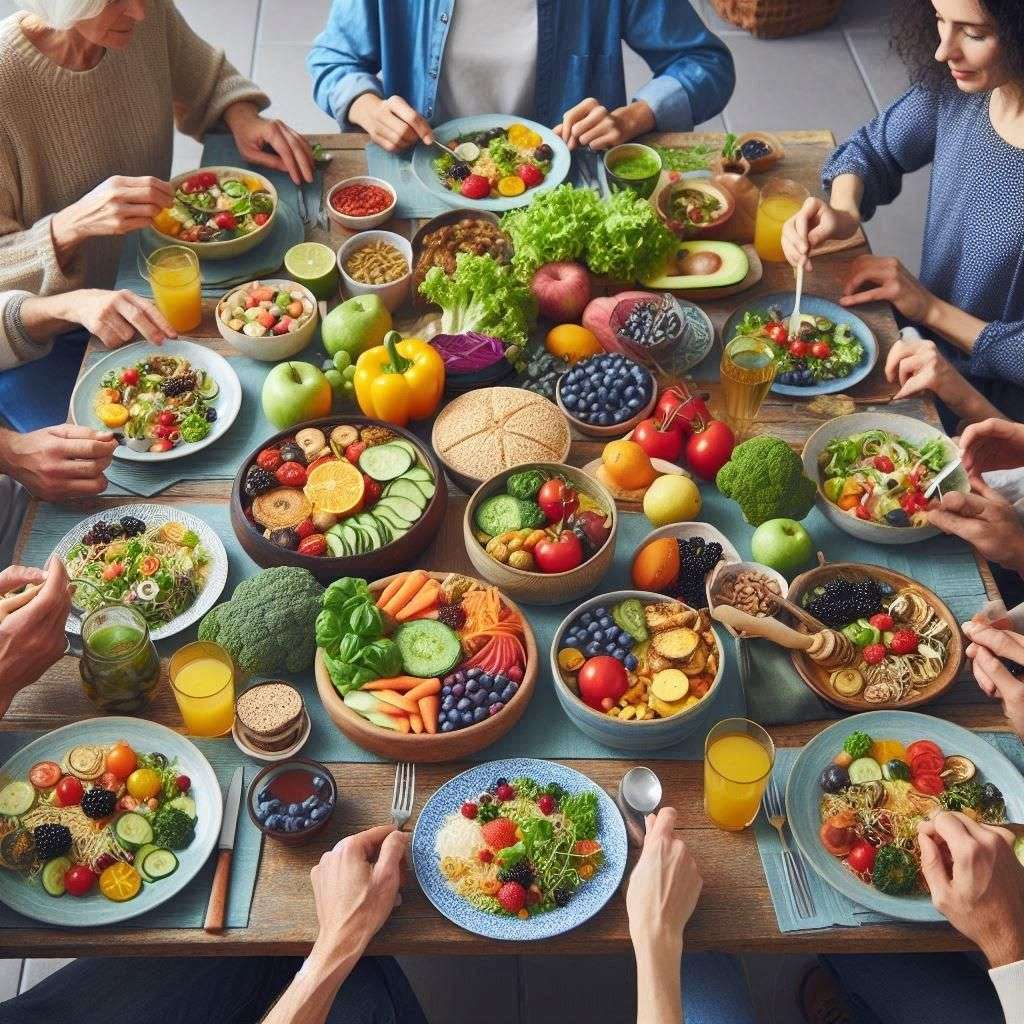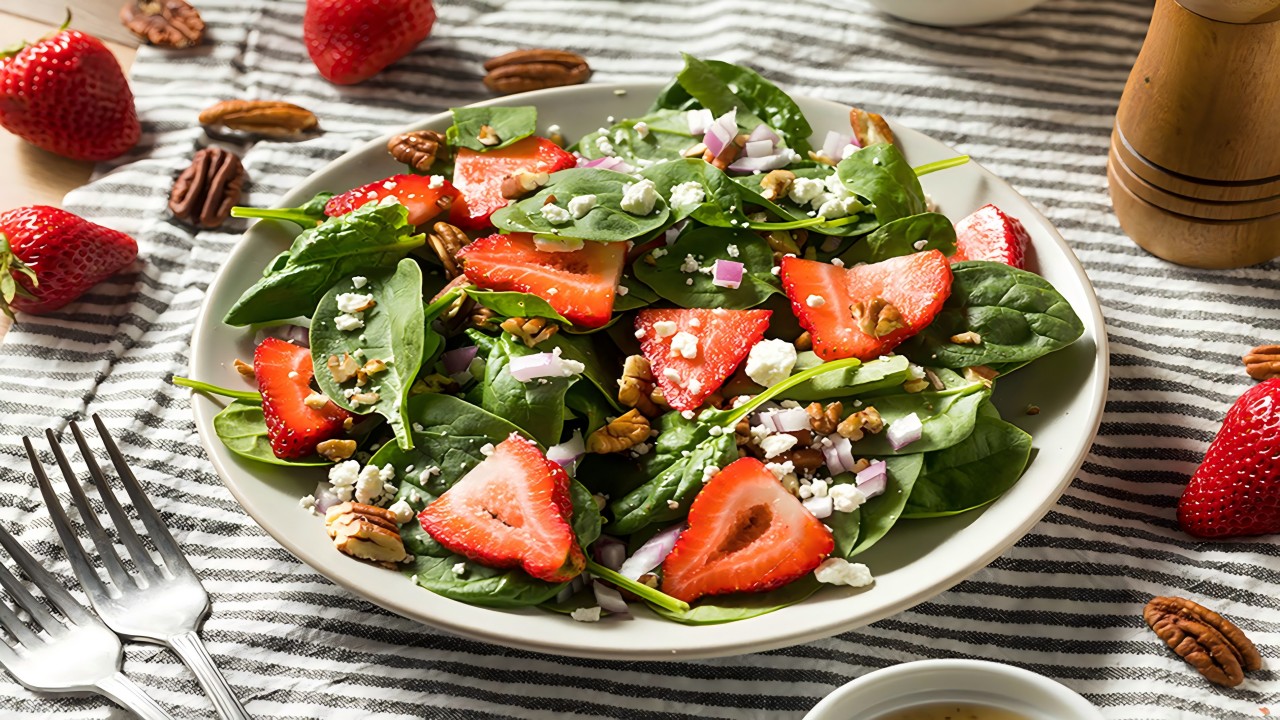The History of Vegetarianism
Human populations throughout the years have, on many occasions, been forced to depend on a diet consisting entirely of vegetables due to poverty or the unavailability of animal products.
Nevertheless, vegetarianism as a word often signifies the voluntary abstinence from meat due to religious, spiritual, ethical, hygienic, or environmental grounds.
As such, there are differences in what is considered permissible non-meat foodstuffs within this perspective, resulting in many factions within the community of vegetarians.
The largest group is the “lacto-ovo” vegetarians, who ingest dairy goods and eggs but not meat.
There are additional smaller groups, including “vegans” who refuse all animal products, “lacto-vegetarians” that take milk only while leaving out eggs, “ovo-vegetarians” who eat eggs minus milk, “fruitarians” who eat only fruits and nuts, and lastly, “raw foodists” and “natural hygienists," who avoid refined or processed vegetable foods.
Regardless of these groups’ differing motivations, most vegetarians choose this lifestyle as part of their commitment to spreading the message that others should similarly avoid eating meat.
History of Vegetarianism in Religion
The earliest recorded instance of vegetarianism is in ancient India, particularly among Hindus and Jains.
Besides, there are also later records that state that some small groups within the southern Italian and Greek civilizations of the ancient Greeks adhered to the principles of vegetarianism.
In all cases, such a diet was closely associated with "ahimsa,” or non-violence to animals, in India and supported by religious sects and thinkers.
With the spread of Christianity in Rome during late antiquity (4th-6th centuries), Europe became almost non-vegetarian-free.
Among medieval monastic orders in Europe, some prohibited or limited meat consumption for ascetic reasons, but none refrained from eating fish. There were not vegetarians but pescetarians.
However, by the Renaissance period, vegetarianism gained ground again in Europe, becoming more popular between the 19th and 20th centuries.

The Renaissance revival of vegetarianism and its ethical underpinnings
With the emergence of the European Renaissance, vegetarianism was reintroduced as a philosophical concept because of ethical reasons that were propelling it.
A meat-free diet was advocated for by prominent people such as Leonardo da Vinci and Pierre Gassendi. English writer Thomas Tryon became one of the leading scholars on the Pythagorean diet in the 17th century, which later influenced Romantic poets.
Notwithstanding, influential philosophers like René Descartes and Immanuel Kant asserted that humans have no moral responsibilities towards animals. However, Kant recognized cruelty to animals as directly implying cruelty towards human beings.
The anthropocentric view in late 18th-century England that saw animals existing simply for use by humans diminished significantly before dying out altogether.
Conversely, small groups of Christian vegans like the Ephrata Cloister founded by Conrad Beissel appeared in America during this time. Benjamin Franklin turned vegan at 16 but abandoned this approach afterward to embrace eating meat once again.
It is worth noting that he brought tofu to America in 1770 when it arrived from English missionaries returning home from Japan. Early American vegetarians included Colonel Thomas Crafts Jr.
Vegetarianism and cultural reform movements in Victorian England
The philosophy of vegetarianism is often associated with cultural reform movements such as temperance and anti-vivisection, which stood for “nature life." Early 19th-century England witnessed the flourishing of this movement, particularly in urban regions of the north and the middle.
Francis William Newman, Isaac Pitman, and Percy Bysshe Shelley are among those that played a prominent role in its dissemination.
The Vegetarian Society was established in 1847 and grew steadily to almost 4,000 members by the end of the century.
The question of class lent an ambiguity to vegetarianism, whereby it was considered moral and healthy by upper-middle-class people, whereas working-class people would remain vegetarians mainly because they had no other alternatives due to poverty.
Women were forgotten stars who had significant inputs into this activity. Feminist vegetarians like Elizabeth Horsell and Jane Hurlstone participated through lectures, writings, or cookbooks.
Their organization, the Women's Vegetarian Union, opened its doors in 1895 with great emphasis on reaching out to the proletariat and advocating for a plain diet.
Its morality drew feminist thinkers and utopians like Charlotte Perkins Gilman and Margaret Fuller who wrote about it, envisioning a future where women would be liberated from oppression at the domestic level, thus bringing about a society changed by female emancipation that is also vegetarianism.

Early vegetarianism in the United States and beyond
The first American vegetarian cookbook was written by Asenath Nicholson in 1835, and in 1845, the first vegetarian newspaper titled The Pleasure Boat began publication.
Graham Crackers founder William Metcalfe and Reverend Sylvester Graham played a key role in establishing the American Vegetarian Society in 1850. Dr. William Alcott’s 1838 book "Vegetable Diet" is one of the most important works in American vegetarian literature.
The Seventh-day Adventist Church’s co-founder Ellen G. White preached about vegetarianism, which the church still advocates for its members.
In his Battle Creek Sanitarium, Dr. John Harvey Kellogg (a Seventh - day Adventist) also supported vegetarianism and promoted "biologic living." Isaac Jennings, Susanna W. Dodds, M. L.
Holbrook, and Russell T. Trall were notable American vegetarians who helped to shape the natural hygiene movement. Internationally, figures like Leo Tolstoy of Russia and Germany’s Gustav Struve led the charge in advocating for vegetarianism.

Contemporary trends in vegetarianism
The largest number of vegetarians in the world is Indians, particularly those who do not eat eggs and fish. More than 70% of all vegans are Hindus, while 20–42% of people claim that they are vegetarians.
Meat is only eaten by less than a third of them. Vegetarianism is rather unpopular because about six percent of American adults identify themselves as vegetarians (including vegans) and about three percent are vegans.
In 1994 and 1997, only one percent of Americans were vegetarians, which changed significantly by the year 2021, when five percent of children aged between eight and seventeen years stopped eating meat, fish, and poultry, while two percent turned vegan.
The first public school to serve an all-vegetarian menu while still meeting the nutritional requirements set by the US Department of Agriculture for proteins was PS 244 in Queens, New York, during 2013.
In India, Palitana City in Gujarat became the first legally vegetarian city, banning meat sales, butcheries, and hotels serving non-vegetarian food items.
A survey conducted in the UK shows that about one-quarter meals eaten at night did not contain any animal flesh or eggs, signifying a marked change toward becoming vegetarian.
They imply that vegetarianism has become increasingly popular among different societies around the world.
OTHER NEWS
-
- The History of Pancakes—and Must-Try Recipes
- By Prodosh Kundu 03 Sep,2024

-
- The Carrot Cake: America’s Wholesome Dessert
- By Roha Tariq 17 May,2024

-
- The Evolution of Thanksgiving Dinner: From Historical Feasts to Modern Meals
- By Borislav Milushev 16 May,2024

-
- The Development History of Pudding Desserts: A Sweet Journey Through Time
- By Molly Joshi 21 May,2024

-
- A warm welcome to the ‘DARK’
- By Taruna Agarwal 16 May,2024

-
- Five Things You Must Know About the Mediterranean Diet
- By Prodosh Kundu 08 Jul,2024

-
- The History of Tacos—And Must-Try Recipes
- By Prodosh Kundu 03 Sep,2024

-
- How to Choose the Right Yogurt
- By Prodosh Kundu 19 Aug,2024

-
- The History of Salads—And Must-Try Recipes
- By Prodosh Kundu 02 Sep,2024

-
- Christmas County
- By Taruna Agarwal 21 May,2024

-
- Must-Try Dessert Recipes: Simple and Easy
- By Prodosh Kundu 09 Jul,2024

-
- The Sweet Evolution: A History of Candy Desserts
- By Molly Joshi 21 May,2024

 1
1 1
1